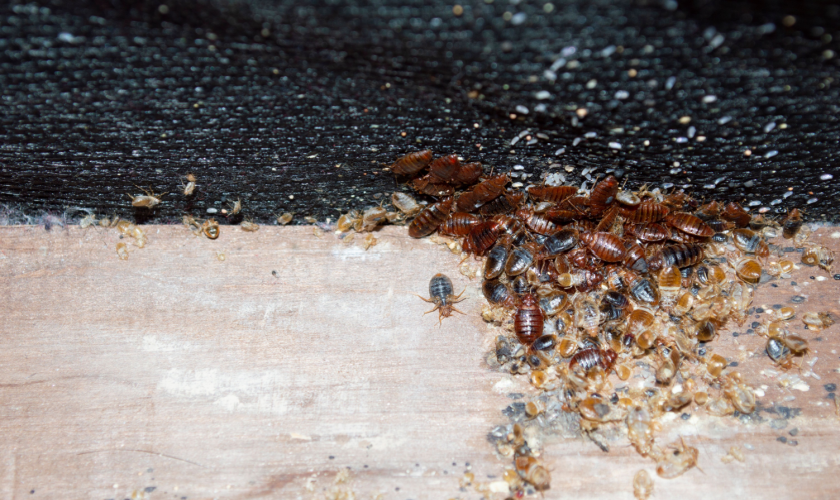Recognizing the Lifecycle of Pests for Targeted Control Methods
Understanding the lifecycle of bugs is a fundamental aspect of reliable pest administration approaches. By comprehending the various stages of development that pests undergo, an extra targeted and specific approach can be embraced to manage their populaces. This knowledge not just clarifies the vulnerabilities within the bug lifecycle yet likewise leads the way for implementing strategic measures that can disrupt their growth and recreation cycles. With a much deeper understanding of exactly how insects flourish and evolve, customized control techniques can be designed to attend to particular factors in their lifecycle, eventually leading to even more successful pest monitoring results.
Relevance of Comprehending Parasite Lifecycle
Understanding the lifecycle of bugs is vital for creating effective and targeted control techniques in parasite management. By comprehending the different phases a pest experiences from egg to grownup, parasite control professionals can recognize prone factors in the lifecycle where treatment can be most successful. As an example, knowing when larvae are most energetic can help identify the optimum timing for applying larvicides. In addition, comprehending the life expectancy of a parasite types can assist in anticipating population development patterns and possible infestation dangers.
Additionally, recognizing the particular ecological problems required for each and every stage of the insect's lifecycle can direct decisions on habitat adjustment or exclusion methods to interrupt the lifecycle and lower bug populaces. This understanding enables pest management specialists to apply aggressive actions as opposed to depending exclusively on responsive treatments, bring about even more sustainable and long-term insect control solutions. Inevitably, a thorough understanding of parasite lifecycles equips pest control practitioners to customize their techniques effectively, optimizing and lessening environmental effects control outcomes.
Trick Phases in Insect Advancement
To effectively apply targeted control methods in bug management, a vital aspect depends on thoroughly recognizing and comprehending the crucial phases in parasite development. Bug advancement generally contains numerous vital stages that are essential for their lifecycle and administration. The very first phase is the egg phase, where bugs lay eggs that later on hatch out right into larvae. Larvae after that proceed right into pupae, a phase where they undertake transformation prior to arising as grown-up parasites. Recognizing these phases is crucial as it aids in pinpointing weak spots in the lifecycle where control steps can be most efficient.

Susceptabilities in Insect Lifecycle
Throughout the numerous phases of an insect's lifecycle, unique vulnerabilities emerge that can be strategically targeted for reliable control actions (A1 Bed bug exterminator houston LLC). One critical susceptability lies in the egg stage, where parasites are commonly a lot more susceptible to particular pesticides or biological control representatives due to their soft external shell, making them easier targets for treatment. Comprehending these vulnerabilities in the parasite lifecycle is vital for developing specific and effective find out here now control methods that successfully handle pest populaces while lessening environmental influence.
Executing Targeted Control Actions

Executing targeted control measures typically involves a multi-faceted strategy. This might include environment adjustment to make the environment much less welcoming to bugs, such as removing standing water for insect control or sealing entrance points for rats. Furthermore, biological control approaches can be used, where natural predators or virus are introduced to keep bug populaces in check.
Chemical control, such as the mindful application of pesticides, is another common approach. However, it is necessary to use these compounds deliberately to reduce environmental influence and possible harm to non-target types. Integrated Pest Management (IPM) techniques that integrate numerous control actions in a collaborated and lasting fashion are usually one of the most reliable in achieving long-term pest management goals. By implementing targeted control measures based on a complete understanding of bug lifecycles, bug populaces can be properly controlled while minimizing risks to human health and the environment.
Boosted Bug Management Practices

In addition, the incorporation of organic control representatives, such as natural predators or microorganisms of pests, can assist lower reliance on chemical pesticides and advertise an extra balanced community. Carrying out physical obstacles and traps can also be component find this of boosted pest management methods, using safe and targeted solutions for insect control. Furthermore, the usage of scents and various other semiochemicals can disrupt pest mating patterns and communication, causing lowered parasite populations in time.
Final Thought
By identifying crucial phases in parasite growth and vulnerabilities in their lifecycle, targeted control steps can be implemented to decrease parasite populations. Enhanced parasite administration practices can aid minimize the reliance on broad-spectrum chemicals and promote even more ecologically friendly and lasting insect control methods.
Recognizing the lifecycle of insects is important for creating efficient and targeted control strategies in bug administration. By comprehending the different stages a parasite goes with from egg to grownup, insect control specialists can determine at risk points in the lifecycle where treatment can be most successful. Inevitably, a complete understanding of insect lifecycles encourages insect control practitioners to tailor their approaches efficiently, optimizing and minimizing ecological influences control outcomes.
By applying targeted control measures based on a complete understanding of pest lifecycles, bug populaces can be efficiently managed while minimizing dangers to human wellness and the setting.
By identifying crucial phases in pest development and vulnerabilities in their lifecycle, targeted control procedures can be applied to minimize insect populaces.